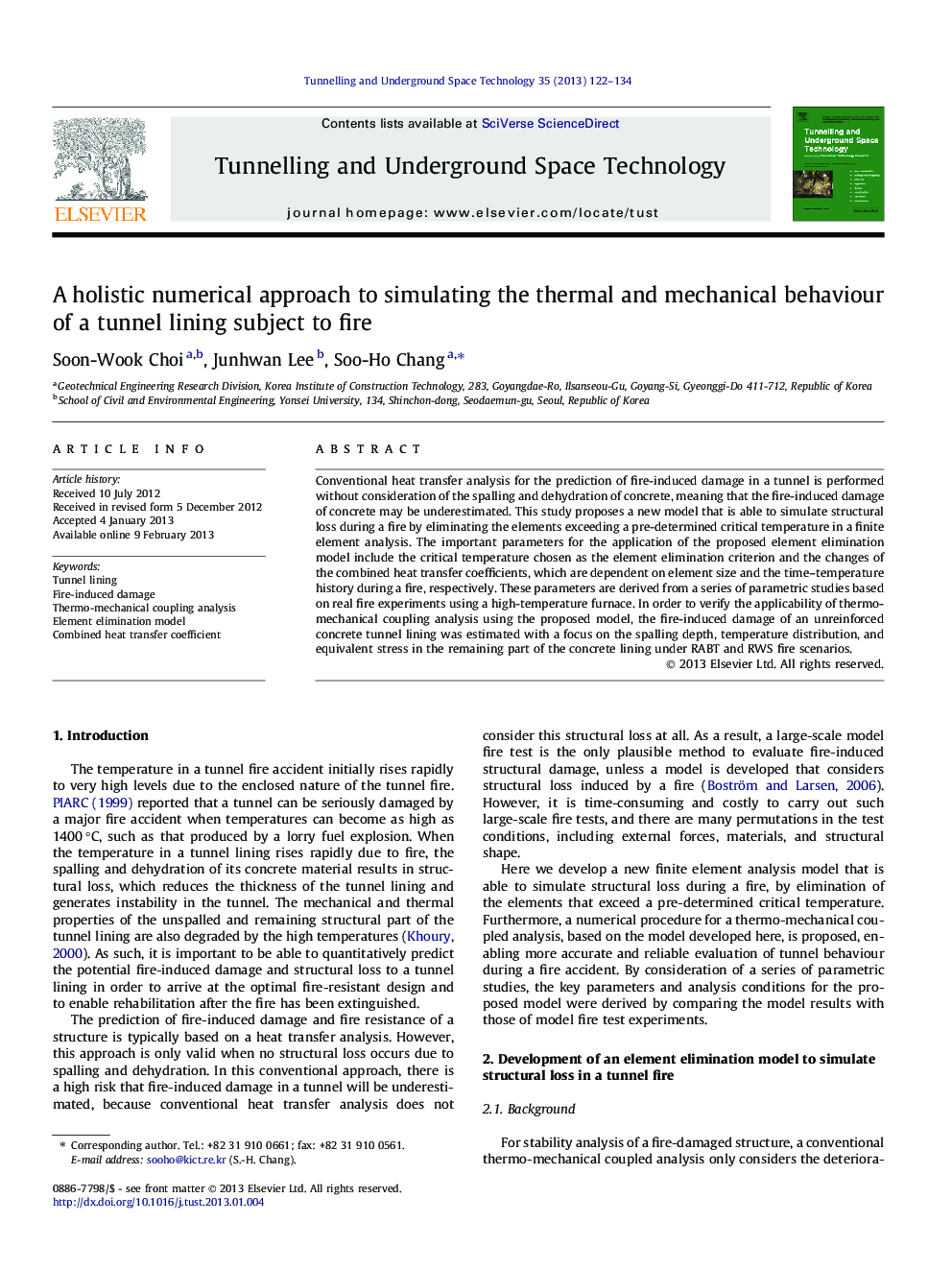| Article ID | Journal | Published Year | Pages | File Type |
|---|---|---|---|---|
| 310700 | Tunnelling and Underground Space Technology | 2013 | 13 Pages |
Conventional heat transfer analysis for the prediction of fire-induced damage in a tunnel is performed without consideration of the spalling and dehydration of concrete, meaning that the fire-induced damage of concrete may be underestimated. This study proposes a new model that is able to simulate structural loss during a fire by eliminating the elements exceeding a pre-determined critical temperature in a finite element analysis. The important parameters for the application of the proposed element elimination model include the critical temperature chosen as the element elimination criterion and the changes of the combined heat transfer coefficients, which are dependent on element size and the time–temperature history during a fire, respectively. These parameters are derived from a series of parametric studies based on real fire experiments using a high-temperature furnace. In order to verify the applicability of thermo-mechanical coupling analysis using the proposed model, the fire-induced damage of an unreinforced concrete tunnel lining was estimated with a focus on the spalling depth, temperature distribution, and equivalent stress in the remaining part of the concrete lining under RABT and RWS fire scenarios.
► A new finite element model to simulate fire-induced structural loss in tunnel lining is proposed. ► The proposed model is coupled with a thermo-mechanical analysis. ► Time-dependent combined heat transfer coefficients are obtained. ► The proposed model is experimentally validated from a series of fire tests under high temperature.
